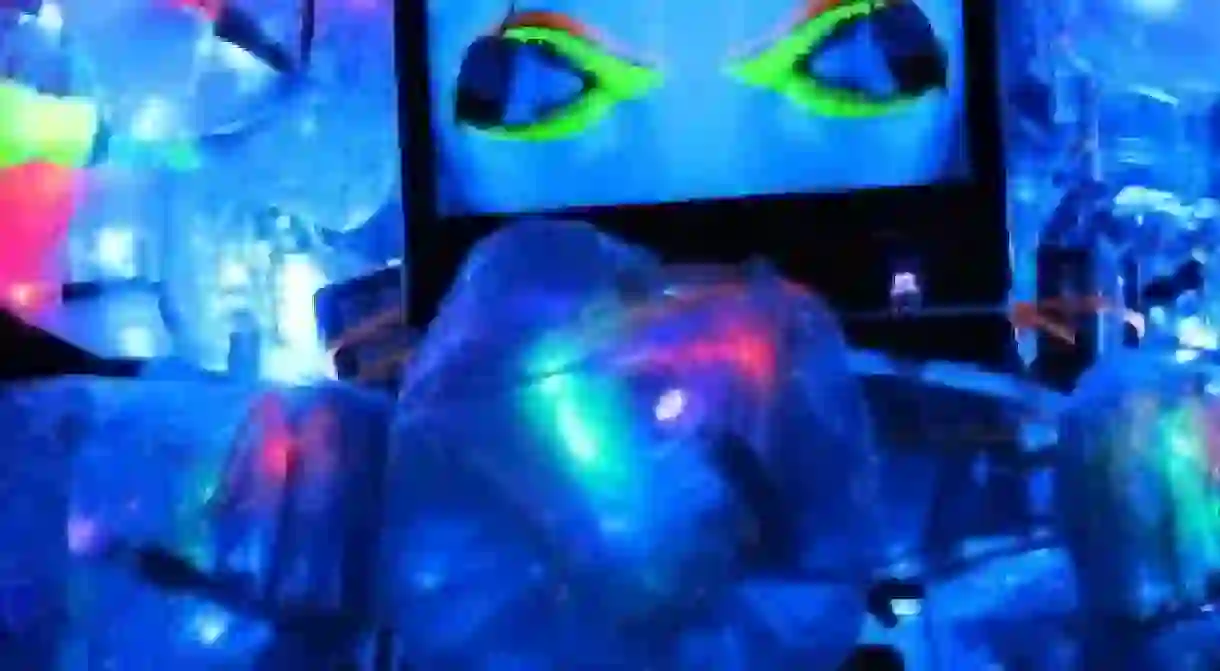The Weird and Wonderful Sculptures of Shih Chieh Huang

Taiwanese Shih Chieh Huang is an artist who has dedicated his life to making the mundane mesmerizing. As a child, Huang loved nothing more than deconstructing the objects he found in his immediate environment, seeing what was inside, and then piecing them together again. Throughout his work, he has made even the most ordinary of objects seem worthy of exploration.

Growing up, Huang developed a love of street markets and their eccentric wares: ‘I love the energy of the night markets, the colors, the lights, the toys, and all the unexpected things I find every time I go, things like watermelon with straw antennas or puppies with mohawks,’ he explained at a recent TED talk. The idea that the ordinary can be transformed is a premise that has informed much of his work. Indeed, some of his early installations used objects as basic as highlighter pens, and yet Huang was able to create something magical, mixing them with water and linking them to a system of tubes so that the fluorescent colors pumped round the viewer in an imitation of the circulatory system.

This synthesis of art, technology and the body is something Huang has developed further in later works. Taking his own belly button as an example, he wanted to explore things that are normally left unconsidered: ‘I would take camera LED lights and a bungee cord and strap it on my waist and I would videotape my belly button, get a different perspective, and see what it does,’ he continued.

The way in which technology can interact with the human body provided the impetus for his project E-P 2, a short film that documents a makeshift laboratory in which technicians capture the movement of a human subject’s eye. The subject wears what looks like a bicycle helmet adorned with light bulbs and recording devices, while their eye appears on a screen opposite. Huang described this as allowing him to ‘symbolically extract other people’s eyes, so I have a diversity of eyes to use for my other sculptures,’ and he has also developed technology which allows him to control systems such as light switches and televisions through the movement of the eye.

For much of 2007, Huang was exploring deep-sea creatures and bioluminescent organisms during a research fellowship at the Smithsonian Natural History Museum. The evolved characteristics which allowed such creatures to survive in these hostile conditions particularly inspired the artist, and the result was an exhibition titled The Bright Beneath: The Luminous Art of Shih Chieh Huang in which his computer cooling fans and LED light systems were hung from the ceiling, like organisms floating above the viewer. Huang worked closely with the museum’s Department of Vertebrate Zoology in order to understand the ways in which these species, such as fish, worked, and his own technological creations are an artistic representation of their movements.

Huang’s artwork is not meant to be admired in the conventional sense. Rather than simply presenting us with objects to be hung on a wall, Huang’s ambition is to create ‘environments for people to explore and play.’ He describes his use of technology as simply ‘a medium like red or blue paint a painter would use,’ seamlessly incorporated into his work and bringing his creations to life. Huang implores us to access our imaginations and return to a stage of our lives when everything was an unanswered question, when even the most mundane of things seemed utterly extraordinary.














